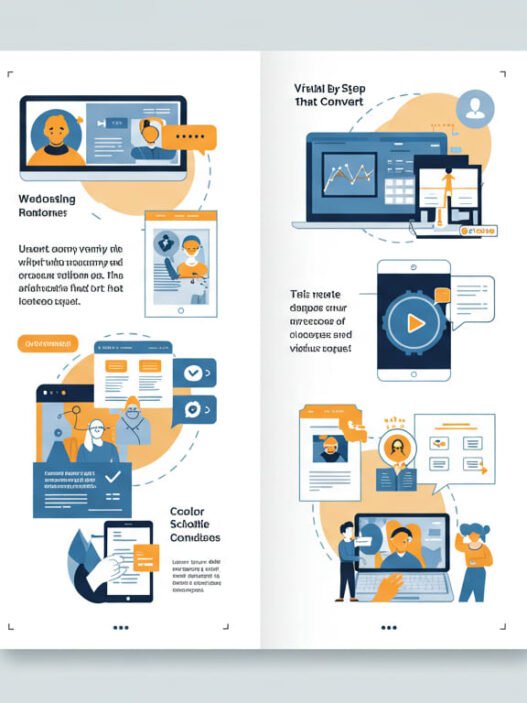How to Use AI and Machine Learning for Advanced Analytics
AI-powered analytics has transformed from futuristic concept to business necessity, enabling organizations to uncover patterns, predict outcomes, and optimize operations at scales impossible through traditional analysis methods. After implementing machine learning analytics across hundreds of businesses, companies leveraging AI achieve 30-50% improvements in decision accuracy while reducing analysis time from weeks to hours.
The businesses dominating their markets through artificial intelligence analytics don’t just automate existing processes—they discover insights that human analysts miss, predict customer behavior with unprecedented accuracy, and optimize operations in real-time based on continuous learning from massive data streams.
Advanced analytics with AI requires understanding which problems benefit from machine learning solutions versus traditional statistical methods, how to prepare data for algorithmic analysis, and when automated insights provide strategic advantages over human expertise. The most successful implementations combine artificial intelligence capabilities with human strategic thinking to create competitive advantages that compound over time.
Understanding AI Analytics Applications
Machine learning for business analytics excels at pattern recognition in complex datasets, predictive modeling with multiple variables, and optimization problems that traditional analysis approaches cannot solve efficiently or accurately.
Predictive analytics with AI enables forecasting customer behavior, market trends, and operational outcomes with accuracy levels that inform confident strategic decisions and resource allocation. Machine learning algorithms identify subtle patterns in historical data that predict future events more reliably than traditional forecasting methods.
AI data analysis handles massive datasets that overwhelm traditional analytical tools while identifying relationships between variables that human analysts might never discover through manual exploration and statistical testing.
Automated anomaly detection using machine learning algorithms monitors business operations continuously, identifying unusual patterns that might indicate problems, opportunities, or changes requiring strategic response before they significantly impact performance.
Real-time analytics powered by artificial intelligence enables immediate responses to changing conditions, customer behavior, and market dynamics that provide competitive advantages through speed and accuracy of decision-making.
Data Preparation for Machine Learning
AI analytics implementation requires data preparation that differs significantly from traditional analysis, including feature engineering, data cleaning, and formatting that enables machine learning algorithms to function effectively.
Machine learning data preparation involves identifying relevant variables, handling missing data, and creating derived features that help algorithms recognize patterns and make accurate predictions based on business requirements.
Data quality for AI-powered analytics requires consistency, completeness, and accuracy standards that exceed traditional analysis requirements because machine learning algorithms amplify data quality problems into unreliable predictions and recommendations.
Feature engineering transforms raw data into variables that machine learning models can use effectively, often creating new data points from existing information that capture relationships and patterns relevant to business objectives.
Training data curation ensures machine learning models learn from representative examples that reflect actual business conditions rather than biased samples that produce models unable to perform effectively in real-world applications.
Customer Analytics and Personalization
AI customer analytics enables personalization at scale through behavioral prediction, preference modeling, and automated segmentation that adapts continuously based on customer interactions and feedback.
Machine learning customer segmentation discovers customer groups based on behavior patterns rather than predetermined demographic categories, often revealing segments that traditional analysis overlooks but represent significant business opportunities.
Predictive customer lifetime value models using AI analytics forecast individual customer worth over extended periods, enabling resource allocation and marketing investment decisions based on expected returns rather than historical averages.
Churn prediction with machine learning identifies customers likely to cancel subscriptions or reduce purchases before behavioral changes become obvious, enabling proactive retention strategies that preserve valuable relationships.
Recommendation systems powered by artificial intelligence analyze customer preferences, purchasing patterns, and similar customer behavior to suggest products or services that increase satisfaction while driving additional revenue.
Marketing Optimization and Campaign Analytics
AI marketing analytics optimizes campaign performance through automated testing, audience targeting, and budget allocation that adapts continuously based on real-time performance data and market conditions.
Machine learning for marketing enables dynamic pricing strategies that adjust based on demand patterns, competitive positioning, and customer willingness to pay, maximizing revenue while maintaining market competitiveness.
Attribution modeling using AI analytics tracks customer journeys across multiple touchpoints, providing accurate understanding of which marketing activities drive conversions and deserve budget allocation.
Predictive marketing analytics forecasts campaign performance, optimal timing, and audience response rates that inform resource allocation and strategic decisions about marketing investments and approaches.
Automated A/B testing powered by machine learning runs continuous experiments across multiple variables simultaneously, identifying optimization opportunities faster than traditional testing methods while maintaining statistical rigor.
Operational Efficiency and Process Optimization
AI operations analytics identifies inefficiencies, predicts maintenance needs, and optimizes resource allocation across business processes that reduce costs while improving quality and customer satisfaction.
Machine learning process optimization analyzes workflow patterns to identify bottlenecks, predict capacity requirements, and recommend improvements that increase productivity without requiring additional resources.
Supply chain optimization using AI analytics predicts demand fluctuations, identifies supplier risks, and optimizes inventory levels that reduce costs while maintaining service quality and customer satisfaction.
Predictive maintenance analytics using machine learning forecasts equipment failures, optimal maintenance timing, and replacement needs that prevent costly downtime while extending asset lifespans.
Quality control systems powered by artificial intelligence identify defects, predict quality issues, and optimize production parameters that maintain standards while reducing waste and rework costs.
Financial Analytics and Risk Management
AI financial analytics enables sophisticated risk assessment, fraud detection, and investment optimization that protects business assets while identifying growth opportunities that traditional analysis might miss.
Machine learning risk analysis evaluates credit risk, market volatility, and operational threats using complex variable relationships that provide more accurate assessments than traditional scoring methods.
Fraud detection systems using AI analytics identify suspicious patterns in transaction data, customer behavior, and system usage that indicate potential security threats requiring immediate attention.
Algorithmic trading analytics powered by machine learning optimize investment decisions, portfolio allocation, and risk management strategies that adapt continuously to market conditions and regulatory changes.
Budgeting and forecasting using artificial intelligence incorporate multiple economic indicators, market trends, and business factors to predict financial performance more accurately than traditional planning methods.
Technology Stack and Implementation
AI analytics platforms should integrate with existing business systems while providing scalability that supports growing data volumes and analytical complexity without requiring complete infrastructure replacement.
Machine learning tools selection requires balancing ease of use, analytical capability, and integration requirements to ensure successful implementation that delivers business value rather than impressive technical demonstrations.
Cloud-based AI analytics solutions often provide cost-effective access to sophisticated algorithms and computing resources that enable advanced analytics without extensive hardware investments or technical expertise.
AutoML platforms make machine learning accessible to business analysts without extensive programming skills, enabling broader organizational adoption of AI analytics while maintaining analytical rigor and reliability.
Data governance for AI analytics ensures model accuracy, regulatory compliance, and ethical use of artificial intelligence while protecting customer privacy and maintaining business reputation.
Model Development and Validation
Machine learning model development requires systematic approaches that ensure accuracy, reliability, and business relevance rather than technical sophistication that doesn’t translate into practical business value.
AI model validation includes testing accuracy against known outcomes, evaluating performance across different customer segments, and ensuring models perform reliably in real-world business conditions.
Cross-validation techniques prevent overfitting that creates models performing well on historical data but poorly on new information, ensuring AI analytics provide reliable insights for ongoing business decisions.
Model interpretability helps stakeholders understand how artificial intelligence reaches conclusions, building confidence in AI-driven recommendations while identifying potential bias or errors that require correction.
Continuous model improvement processes update machine learning algorithms based on new data, changing business conditions, and performance feedback that maintain accuracy and relevance over time.
Predictive Analytics Applications
Business forecasting with AI enables accurate predictions of sales, demand, customer behavior, and market trends that inform strategic planning and resource allocation with confidence levels that support major investments.
Predictive customer analytics identifies purchase likelihood, optimal communication timing, and product preferences that enable personalized marketing and sales approaches that increase conversion rates and customer satisfaction.
Market prediction using machine learning analyzes economic indicators, competitive activities, and consumer trends to forecast market conditions that inform product development, pricing strategies, and expansion decisions.
Demand forecasting with AI enables inventory optimization, production planning, and resource allocation that reduce costs while maintaining service levels and customer satisfaction across seasonal and market fluctuations.
Financial forecasting powered by artificial intelligence predicts cash flow, revenue trends, and investment returns that support strategic decisions about growth, financing, and risk management.
Real-Time Analytics and Decision Making
Real-time AI analytics enables immediate responses to changing conditions through continuous monitoring, automated alerts, and decision support systems that provide competitive advantages through speed and accuracy.
Streaming analytics with machine learning processes continuous data flows to identify trends, anomalies, and opportunities that require immediate action rather than waiting for batch processing and periodic reports.
Dynamic pricing systems using AI analytics adjust prices continuously based on demand, competition, and market conditions to optimize revenue while remaining competitive and fair to customers.
Automated decision systems powered by machine learning handle routine choices based on predefined criteria while escalating complex situations that require human judgment and strategic consideration.
Real-time personalization using artificial intelligence adapts website content, product recommendations, and communication based on immediate customer behavior and preferences.
Integration with Business Intelligence
AI-enhanced business intelligence combines traditional reporting with machine learning insights to provide comprehensive analytical capabilities that support both operational and strategic decision-making requirements.
Dashboard integration presents AI-generated insights alongside traditional metrics in formats that enable quick understanding and confident decision-making by stakeholders across organizational levels.
Automated report generation using machine learning identifies significant trends, anomalies, and opportunities that require attention while reducing manual analysis time and improving insight consistency.
Predictive dashboards show forecasted performance alongside current metrics, enabling proactive management and strategic adjustment based on expected outcomes rather than reactive responses to problems.
Natural language processing for AI analytics enables stakeholders to ask questions in plain language and receive analytical insights without requiring technical expertise or complex query construction.
Building AI Analytics Capabilities
Organizational AI readiness includes data infrastructure, analytical skills, and cultural adaptation that support successful machine learning implementation and ongoing optimization for business value.
AI analytics training ensures team members understand machine learning capabilities, limitations, and appropriate applications while building confidence in AI-driven insights and recommendations.
Change management for AI analytics adoption addresses stakeholder concerns about automation, job displacement, and decision-making authority while demonstrating value and maintaining human oversight.
Vendor evaluation for AI analytics solutions requires understanding business requirements, integration needs, and long-term scalability rather than focusing exclusively on technical features or pricing considerations.
Pilot project planning enables organizations to test machine learning analytics on specific business problems while building experience and confidence before larger-scale implementation across multiple functions.
Measuring AI Analytics Impact
ROI measurement for AI analytics tracks business improvements attributable to machine learning insights, including revenue increases, cost reductions, and efficiency gains that justify investment and guide expansion decisions.
AI analytics performance metrics should focus on business outcomes rather than technical accuracy measures, ensuring artificial intelligence delivers practical value that supports strategic objectives and competitive positioning.
Decision quality assessment evaluates whether AI-powered insights improve business choices compared to traditional analysis methods, validating artificial intelligence value while identifying optimization opportunities.
Business impact tracking connects specific AI analytics applications to measurable improvements in customer satisfaction, operational efficiency, and financial performance that demonstrate strategic value.
Long-term value assessment measures cumulative impact of machine learning analytics on competitive positioning, market share, and business growth that justify continued investment and capability development.
The organizations achieving exceptional results through AI and machine learning analytics understand that success requires strategic focus on business problems rather than technical capabilities, systematic implementation that builds on existing strengths, and continuous optimization based on business outcomes rather than algorithmic sophistication. They treat artificial intelligence as powerful tool for competitive advantage rather than replacement for human strategic thinking and business judgment.






















